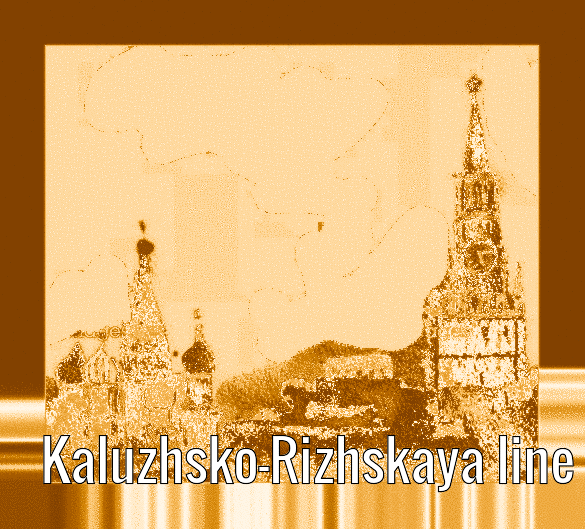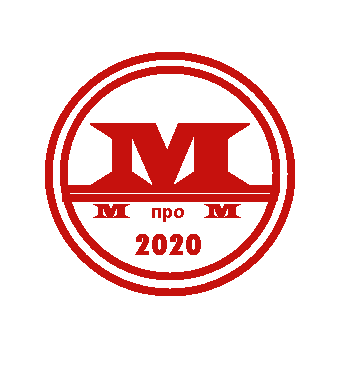
The Kaluzhsko–Rizhskaya line (Russian: Калу́жско-Ри́жская ли́ния, IPA: [kɐˈɫuʂskə ˈrʲiʂskəjə ˈlʲinʲɪjə]) is a line of the Moscow Metro, that originally existed as two separate radial lines, Rizhskaya and Kaluzhskaya opened in 1958 and 1962, respectively. Only in 1971 were they united into a single line as the central section connecting the stations Oktyabrskaya to Prospekt Mira was completed. It was also the first line in Moscow to have a cross-platform transfer. The Rizhsky radius is roughly aligned with a northern avenue Prospekt Mira, while the Kaluzhskiy radius generally follows a southwestern street Profsoyuznaya Ulitsa. Presently, the Kaluzhsko–Rizhskaya line is the third busiest in the system with a passenger traffic rate of 1.015 million per day. It has a bi-directional length of 37.8 kilometres (23.5 mi), and a travel time of 56 minutes, typically it is coloured orange on Metro maps and numbered 6.
The Kaluzhsko–Rizhskaya Line was the first one in Moscow to be built in the time of the new epoch, when contrary to the old time-consuming manual work that produced the most famous stations in the system the De-Stalinization policies of Nikita Khrushchev forced the modernisation and development of new saving techniques.
Nonetheless the overall layout of the Metro was completed in 1954 when the ring became fully operational. Moscow Metro planners immediately drew new areas of development which would come in radii starting at the ring. The first such radius became the Rizhsky, which would expand northwards from the Botanichesky Sad (now Prospekt Mira) station along the Mira avenue past the Rizhsky Rail Terminal and terminate at the newly built All-Russia Exhibition Centre. Construction began in the mid 1950s and in 1958 the first four stations of the new radius opened. Already the first stations show a clear transition away from the Stalinist elements in architecture, where it is obvious how the original project was altered to make it simpler and aesthetic. New construction methods, such as shortening the station vault diameters from 9.5 to 8.5 metres and new element junction methods dramatically reduced the building time.
On the opposite end of the ring, a second new radius was planned to be built – Kaluzhsky, which would follow on a southeast contour to the first newly built Cheryomushki bedroom districts made from Khrushchyovka houses. Like the cheap buildings it expanded into the Kaluzhsky radius was made completely of any decorative architecture whatsoever. For the first time a joint project for a sub-surface station – the Sorkonozhka (Centipede) was created. Consisting of an enclosed concrete prism, it featured two supporting rows of pillars for the ceiling. The original design was standardised to the point where stations differed only in the colour of marble on the pillars and the ceramic tiling patterns of the walls. However the method allowed for even further increase in construction methods. A rational combination of using deep-level shield tunnels and a sub-surface station pit allowed for this, and would become the most widely used technique in many ex-USSR metro systems. In 1962 the Kaluzhskaya line was opened, and in 1964 it had its first extension to the new Kaluzhskoye depot where a temporary surface station was opened.
-
VDNKh
-
Alekseyevskaya
-
Rizhskaya
-
Prospekt Mira
-
Oktyabrskaya
-
Leninsky Prospekt
-
Akademicheskaya
-
Profsoyuznaya
-
Novye Cheryomushki
-
Kaluzhskaya (phantom)
-
Kitay-gorod
-
Tretyakovskaya
-
Sukharevskaya
-
Turgenevskaya
-
Kaluzhskaya
-
Belyayevo
-
Medvedkovo
-
Babushkinskaya
-
Sviblovo
-
Botanichesky Sad
-
Shabolovskaya
-
Konkovo
-
Tyoply Stan
-
Yasenevo
-
Novoyasenevskaya


